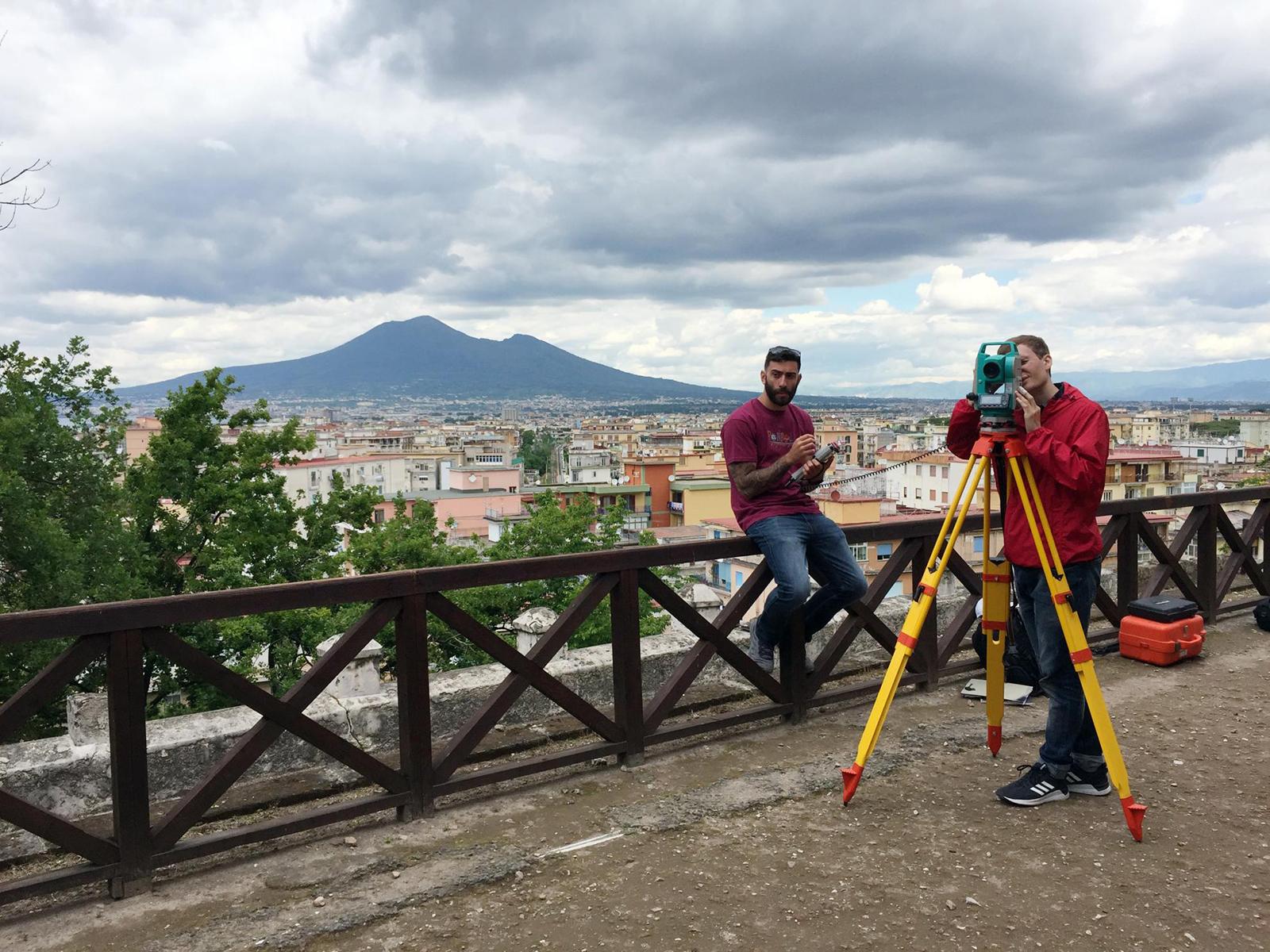As has been the practice for nearly two decades, students at UMD have traveled to the site of several large Roman villas near the Bay of Naples in southern Italy, to experience field archaeology first-hand.
For the Summer 2019 education abroad offering—”In the Shadow of Vesuvius"—Assistant Professor Joe Williams accompanied eight students to Castellamare di Stabia, to train them in architectural recording for field archaeology. The class teaches architecture students to participate in field archaeology, and archaeology students to learn various tasks expected of a surveyor, architect or artist on an archaeological team.
The seaside villas of ancient Stabiae provided a place for the Roman elite to vacation in luxury, as well as a way for them to flaunt their wealth and power. A once beautiful resort town, Stabiae overlooked the Bay of Naples and had a great view of Mount Vesuvius, just 10 miles to the north. When Vesuvius erupted in 79 AD, it left Stabiae under two meters of volcanic ash, turning it into an archaeologist’s dream.
Since 2000, the University of Maryland’s Architecture Program has been a major player in uncovering the Roman villas of Stabiae, one of the largest excavation sites in the ancient world. Each summer, architecture students have travelled from College Park to the coastal town as part of the Restoring Ancient Stabiae Foundation (RAS), a non-profit archaeological organization founded by the University of Maryland, the Superintendency of Archaeology of Pompeii and the region of Campania. During that time, student teams working with scholars and archeological professionals from around the world have successfully excavated and documented several of the site’s Roman gardens, courtyards and villas, including the Villa Arianna, known for its stunning frescos and private tunnel to the seashore.
Take a look at photos of the class’ work in our Flickr gallery, and read more about UMD’s work at Stabiae here.


